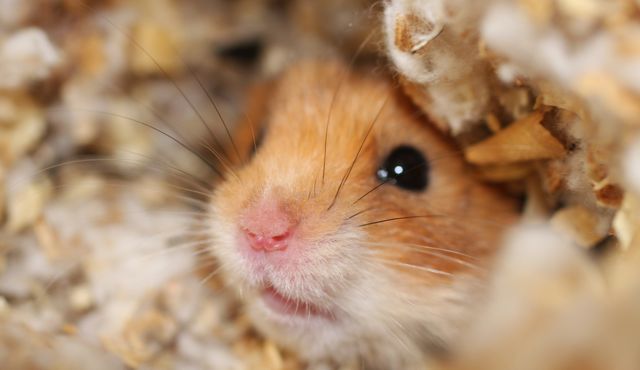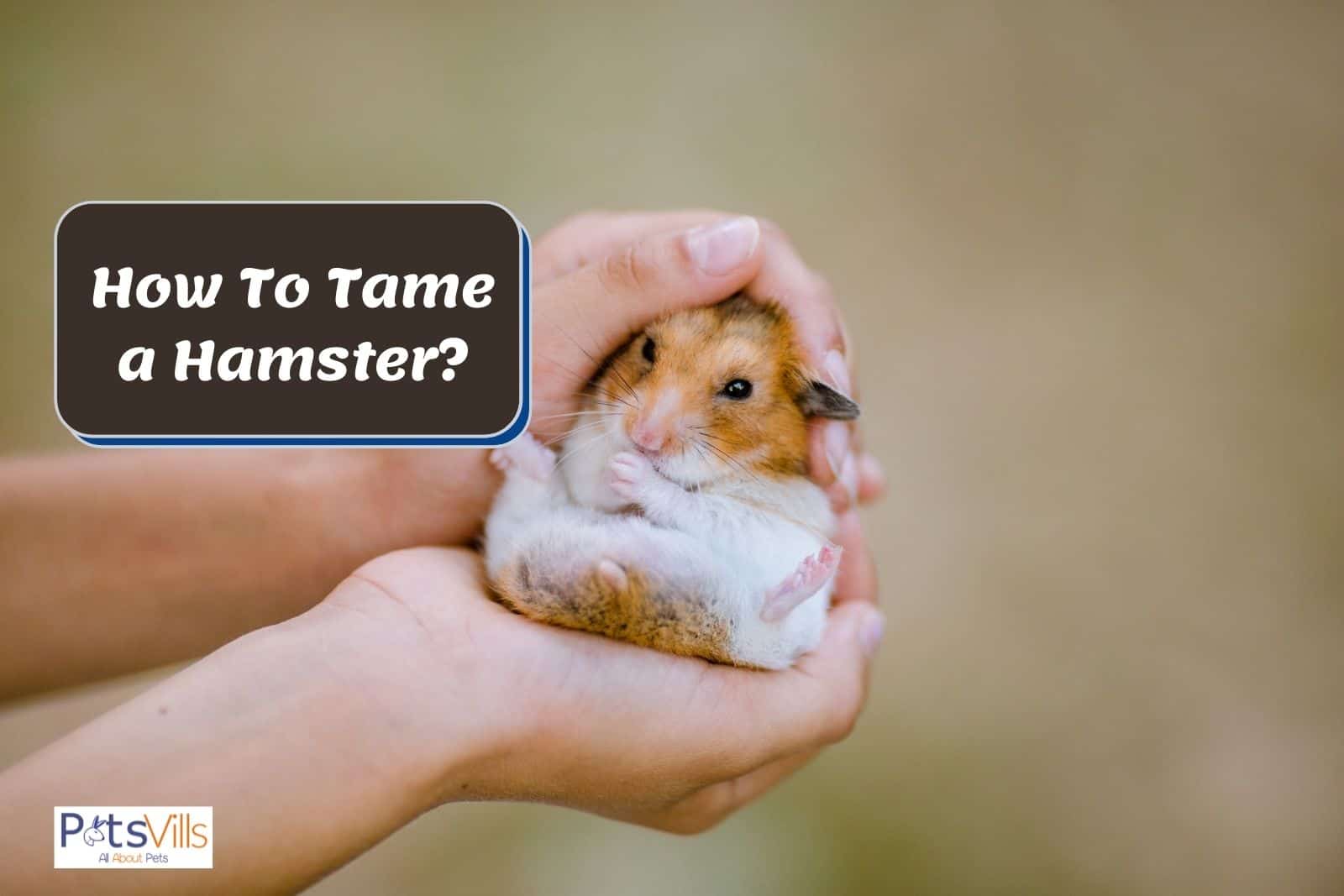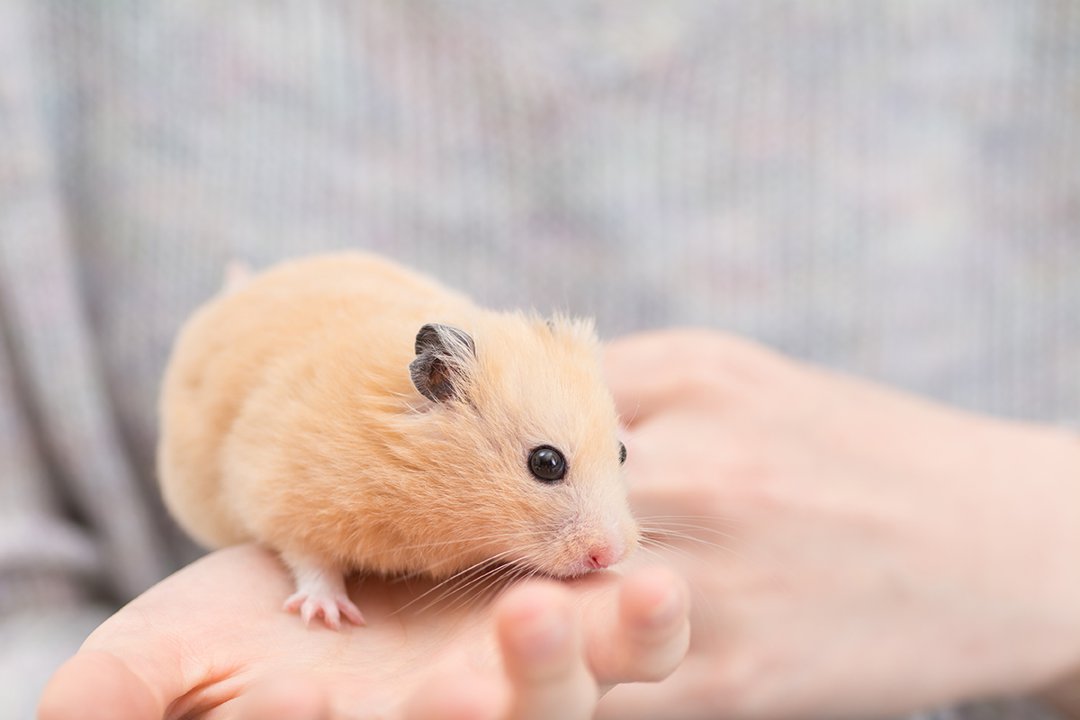As humans, we all know how powerful food can be in motivating us to achieve certain goals or complete tasks. It’s no different for our furry friends, especially when it comes to taming hamsters. Using food rewards can be a great way to encourage your hamster to interact with you and feel more comfortable in your presence. In this blog post, we’ll explore the benefits of using food rewards for hamster taming progress and provide some tips on how to choose the right treats and implement this training method effectively. So buckle up, grab some snacks (for you and your hamster), and let’s dive in!
:strip_icc()/GettyImages-1206094142-4ea14976f93f4600a0b00010f93487d9.jpg)
1. Knowing your hamster’s favorite treats can increase their motivation during taming sessions.
Hamsters have their own preferences when it comes to treats, and knowing what they like can significantly improve their motivation during taming sessions. Providing them with their favorite treats can make them more willing to cooperate and get used to being handled. A well-fed and content hamster is also more likely to bond with their owner, making them more receptive to training. Using food rewards in conjunction with training methods such as clicker training can be particularly effective in teaching new behaviors. While different hamsters have varying levels of motivation, finding what works best for your pet can make a big difference in their progress. Overall, discovering your hamster’s favorite treats and using them as motivators can be a valuable tool in the process of taming and bonding with your furry friend.

2. A happy and well-fed hamster is more likely to bond with their owner.
When it comes to bonding with a hamster, providing them with a happy and well-fed environment is crucial. As stated previously, hamsters are easily motivated by food rewards, which can help build trust between the owner and their pet. Ensuring your hamster has a proper diet with their favorite treats can increase their motivation during taming sessions and make them more receptive to training. A relaxed and content hamster will also be more likely to show signs of affection and interact with their owner, ultimately forming stronger bonds. Consistency is key, so consistently rewarding your furry friend every 10 seconds during training sessions is a great way to keep them engaged. Remember to have patience and go at your hamster’s pace, as forcing interactions can lead to a negative experience. Even just talking to and touching your hamster while they’re in their cage can help them become more comfortable with their owner. In the end, a happy and healthy hamster will no doubt lead to a happy and rewarding relationship with their owner.

3. Training with a clicker can be effective in teaching your hamster new behaviors.
Training your hamster with a clicker can be a fun and effective way to teach them new behaviors. Clicker training reinforces positive behavior by associating the sound of the clicker with receiving a treat. As a result, your hamster will learn to repeat the behavior that led to the reward. This technique can be particularly useful in teaching your hamster to perform tricks or even to come when called. However, it’s important to remember that each hamster is unique and may have different levels of motivation for training. Remember to be patient and consistent, and to always use positive reinforcement and rewards. With time, your hamster will gradually develop a stronger bond with you and become more comfortable with learning new behaviors.

4. Different hamsters have varying levels of motivation, so it’s important to find what works for your pet.
It’s important to remember that different hamsters have varying levels of motivation when it comes to taming. That’s why it’s crucial to find what works best for your pet. Some hamsters might be more responsive to treats, while others might prefer the clicker method. It’s essential to experiment with different techniques and see what your hamster responds to best. Keep in mind that patience and consistency are key during the taming process, and it’s essential to go at your pet’s pace. By providing your hamster with the right motivation and rewards, you can create a strong bond with your furry friend and enjoy spending time together.

5. Associating your presence with food rewards can help tame even previously untamed hamsters.
Hamsters can be naturally skittish and fearful, especially if they have not been properly socialized. However, even previously untamed hamsters can be tamed with patience and the right approach. One effective method is using food rewards to associate your presence with positive experiences. This can be achieved by offering yummy treats and speaking softly to your hamster while they are in their cage. Over time, they will come to recognize you as a source of goodies and warmth. This positive reinforcement can help them become more comfortable with human interactions and more open to training. Patience and consistency are key in taming a hamster, but with dedication and plenty of treats, even the most timid hamster can become a loving and affectionate pet.

6. Providing your hamster with their preferred food can make them more receptive to training.
When it comes to taming your hamster, providing them with their preferred food can play an instrumental role in making them more receptive to training. As mentioned earlier, knowing your hamster’s favourite treats can increase their motivation during taming sessions, and this motivates them to work with you. Food rewards can help reinforce desirable behaviours and create positive associations with your presence, which can further encourage bonding between you and your pet. Providing your hamster with their favourite food can also make them more willing to try new behaviours and activities without feeling stressed or overwhelmed. Remember that each hamster has their unique preferences, so it’s essential to find out what works for your pet to ensure they are comfortable and motivated throughout the taming process. By prioritizing your hamster’s favourite food and using it as positive reinforcement during training, you can create a genuine and trusting relationship that’ll make your hamster a devoted companion.

7. Taming a hamster takes time and patience, and it’s important to go at their pace.
Taming a hamster is not a task that can be achieved overnight. It takes time, patience, and lots of effort to build trust between you and your furry friend. It’s important to understand that every hamster has its own personality and temperament, and therefore, will learn at its own pace. Rushing the process can lead to setbacks and frustrating experiences for both you and your pet. The key is to go at their pace, allowing them the time they need to fully trust and bond with you. Remember, a happy and comfortable hamster is more likely to respond positively to taming. So, be patient, consistent, and respect their boundaries. With time and effort, you will see progress and achieve a bond that both you and your hamster can cherish for years to come.

8. Pup interaction is a highly motivating behavior for hamsters, and can be used in taming sessions.
Another highly motivating activity for hamsters during taming sessions is pup interaction. Hamsters are social creatures and enjoy the company of their littermates. By introducing a soft and gentle pup (or stuffed animal) to their environment, hamsters can feel more comfortable and at ease during the taming process. Playing with the pup can distract them from their fear or insecurity, and create positive associations with your presence. It’s important to supervise any pup interaction to ensure the safety of the pup and the hamster, and to only introduce them gradually and in a controlled manner. Overall, using pup interaction as a motivation tool can help speed up the taming process and create a more positive relationship between you and your furry companion.

9. Consistent rewards every 10 seconds can keep hamsters engaged in training sessions.
Consistent rewards every 10 seconds can be a game-changer in hamster taming sessions. By providing a treat every 10 seconds, your hamster will be motivated to keep engaging with you and working towards learning new behaviors. This can help keep them from getting distracted or losing interest in the training session. Additionally, by continuing to give rewards frequently, your hamster will associate your presence with positive experiences and be more likely to bond with you. Remember to be patient and go at your hamster’s pace, as each one has varying levels of motivation and comfort with training. Providing consistent rewards every 10 seconds along with positive reinforcement techniques can transform your hamster into a well-behaved and beloved companion.

10. Talking to and touching your hamster even while they’re in their cage can help them become more comfortable with you.
Talking to and touching your hamster while it’s in its cage can make a significant difference in the taming process. Softly speaking and reassuring your pet that you’re not a threat can go a long way in building trust. It may take some time for your hamster to feel comfortable with your touch, so start slow by offering your hand for them to smell before attempting any petting. This approach shows your hamster that you respect its boundaries and will aid in establishing a bond between the two of you. By incorporating this technique into your taming routine, alongside food rewards and other motivational strategies, you’re giving your hamster the opportunity to grow accustomed to your presence and become a more social and docile pet.
- Diy Delights: Creative Ideas For Hamster Toys And Accessories - April 13, 2024
- Creating A Healthy Habitat: Essential Tips For A Happy Hamster Home - April 13, 2024
- Enrichment Galore: Boosting Your Hamster’s Happiness With Emojis - April 13, 2024